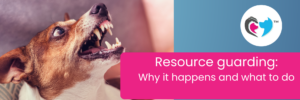Many dogs exhibit fear, anxiety, or reactivity toward moving vehicles and bicycles. This can manifest as barking, lunging, or attempting to chase. Such behaviours pose safety risks to both the dog and the handler. Using positive reinforcement-based desensitization and counterconditioning, we can help dogs develop a calm and neutral response to these common urban and suburban stimuli.
Understanding the root cause
Dogs may react negatively to cars and bicycles due to lack of early socialization, past negative experiences, herding instincts, or general fear of fast-moving objects (McConnell, 2002). Identifying whether a dog’s response is driven by fear or excitement is crucial in tailoring an effective training plan.
Step-by-step desensitization protocol
1. Establishing a safe training distance
Start in a controlled environment where stationary cars and bicycles can be seen from a distance but do not pose an immediate stressor to the dog. Observe the dog’s body language and find the threshold distance where they notice the trigger but do not react (Overall, 2013).
2. Pairing the trigger with positive associations
Each time the dog notices a stationary car or bicycle at a manageable distance, immediately offer a high-value treat (e.g., cooked chicken or cheese). This process, known as counterconditioning, helps the dog form a positive association with the trigger (Pryor, 2009). The key is timing—the treat must come before any signs of reactivity.
3. Gradual decrease of distance
Over multiple sessions, gradually move closer to the parked car or bicycle, always ensuring the dog remains below their reactivity threshold. If the dog starts to show stress signals (e.g., stiff body, ears pinned back, lip licking), increase the distance again and continue rewarding calm behaviour.
4. Introducing motion
Once the dog is comfortable at a reasonable distance, begin exposing them to slow-moving cars or bicycles. A stationary bicycle being walked past at a distance is a good starting point. Gradually increase speed as the dog builds confidence (Donaldson, 1996).
5. Practicing controlled walks
If walking in areas with frequent cars or bicycles, practice loose-leash walking with focus exercises. Teaching a reliable “Look at Me” cue and rewarding eye contact can help redirect the dog’s focus when triggers appear unexpectedly (McDevitt, 2010).
6. Proofing in different environments
Dogs generalize behaviors best when trained in multiple settings. Gradually introduce busier streets or bike paths, maintaining a focus on calm reinforcement and gradual exposure (Jensen, 2007).
Additional Tips for Success
- Keep training sessions short and positive to prevent frustration.
- Avoid punishment, as it can increase anxiety and worsen reactivity (Ziv, 2017).
- Be patient—progress may take weeks or months depending on the dog’s history and temperament.
Desensitizing a dog to moving vehicles and bicycles requires consistency, patience, and positive reinforcement. By gradually increasing exposure while ensuring positive associations, owners can help their dogs develop confidence and a relaxed attitude towards these common environmental stimuli.
References
- Donaldson, J. (1996). The Culture Clash: A Revolutionary New Way of Understanding the Relationship Between Humans and Domestic Dogs. James & Kenneth Publishers.
- Jensen, P. (2007). The Behavioural Biology of Dogs. CABI Publishing.
- McConnell, P. (2002). The Other End of the Leash: Why We Do What We Do Around Dogs. Ballantine Books.
- McDevitt, L. (2010). Control Unleashed: Creating a Focused and Confident Dog. Clean Run Productions.
- Overall, K. (2013). Manual of Clinical Behavioral Medicine for Dogs and Cats. Elsevier Health Sciences.
- Pryor, K. (2009). Reaching the Animal Mind: Clicker Training and What It Teaches Us About All Animals. Scribner.
- Ziv, G. (2017). The Effects of Using Aversive Training Methods in Dogs—A Review. Journal of Veterinary Behavior, 19, 50-60.





